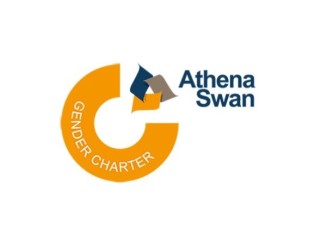
About
Biography
Holger Breinlich joined the School of Economics in April 2018, having held previous positions at the University of Essex, the University of Mannheim and the University of Nottingham. Holger obtained his PhD from the London School of Economics in 2006.
ResearchResearch interests
Holger's research interests are in the areas of international trade and economic geography. He has worked extensively on the economic effects of free trade agreements, on trade in services, and on the determinants of firm-level export patterns. Holger has also acted as a consultant or external academic advisor for a number of national and international bodies, including the European Union, the OECD, and the former UK Trade and Investment and BIS. He has given evidence to select committees in the House of Commons and the House of Lords on matters related to export promotion and trade in services. In 2019-20, Holger served as the representative of UK academia on the UK government's Strategic Trade Advisory Group.
Research interests
Holger's research interests are in the areas of international trade and economic geography. He has worked extensively on the economic effects of free trade agreements, on trade in services, and on the determinants of firm-level export patterns. Holger has also acted as a consultant or external academic advisor for a number of national and international bodies, including the European Union, the OECD, and the former UK Trade and Investment and BIS. He has given evidence to select committees in the House of Commons and the House of Lords on matters related to export promotion and trade in services. In 2019-20, Holger served as the representative of UK academia on the UK government's Strategic Trade Advisory Group.
Publications
In trade models with scale economies import liberalization reduces exports within industries by shrinking real market potential. We find that this export destruction mechanism reduced US export growth following the permanent normalization of trade relations with China (PNTR). There was also an offsetting boost to exports from lower input costs. We use our estimates to calibrate a quantitative model and show that scale economies are economically important for trade policy analysis. Although PNTR increased aggregate US exports relative to GDP, exports declined in the most exposed industries. US gains from PNTR are positive, but 30 percent smaller than under constant returns.
Gravity regressions are a common tool in the empirical international trade literature and serve an important function for many policy purposes. We study to what extent micro-level parameters can be recovered from gravity regressions estimated with aggregate data. We show that estimation of gravity equations in their original multiplicative form via Poisson pseudo maximum likelihood (PPML) is more robust to aggregation than estimation of log-linearized gravity equations via ordinary least squares (OLS). In the leading case where regressors do not vary at the micro level, PPML estimates obtained with aggregate data have a clear interpretation as trade-weighted averages of micro-level parameters that is not shared by OLS estimates. However, when regressors vary at the micro level, using disaggregated data is essential because in this case not even PPML can recover parameters of interest. We illustrate our results with an application to Baier and Bergstrand's (2007) influential study of the effects of trade agreements on trade flows. We examine how their findings change when estimation is performed at different levels of aggregation, and explore the consequences of aggregation for predicting the effects of trade agreements.
How does import protection affect export performance? In trade models with scale economies, import liberalization can reduce an industry's exports by cutting domestic production. We find this export destruction mechanism reduced US export growth following the normalization of trade relations with China (PNTR). But there was also an offsetting boost to exports from lower input costs. We use our empirical results to calibrate the strength of scale economies in a quantitative trade model. Counterfactual analysis implies that while PNTR increased aggregate US exports relative to GDP, exports declined in the most exposed industries because of the export destruction effect. On aggregate, the US and China both gain from PNTR, but the gains are larger for China.
This paper studies how voting to leave the European Union affected living standards in the United Kingdom. Using heterogeneity in exposure to import costs across product groups, we analyze how the depreciation of sterling caused by the referendum affected consumer prices. We find the Brexit depreciation led to higher inflation in product groups with greater import shares in consumer expenditure. Our results are consistent with complete pass-through of the cost of imports to consumer prices and imply aggregate exchange rate pass-through of 0.29. We estimate the Brexit depreciation increased consumer prices by 2.9 percent, costing the average household £870 per year.
Zusammenfassung Der internationale Dienstleistungshandel spielt eine immer bedeutendere Rolle im Welthandel. Hierbei muss im Gegensatz zu Zollschranken im Warenhandel auf die nicht-tarifären Handelshemmnisse geschaut werden, die oft nur schwer quantifizierbar sind. Der Autor diskutiert Handelsbarrieren, den Brexit sowie die damit verbundenen Bedrohungen für den Dienstleistungshandel in Europa.
How does import protection affect export performance? In trade models with scale economies, import liberalization can reduce industry-level exports by cutting domestic production. We show that this export destruction mechanism reduced US export growth following the permanent normalization of trade relations with China (PNTR). But there was also an offsetting boost to exports from lower input costs. We use our empirical results to calibrate the strength of scale economies in a quantitative trade model. Counterfactual analysis implies that while PNTR increased aggregate US exports relative to GDP, exports declined in the most exposed industries because of the export destruction effect. On aggregate, the US and China both gain from PNTR, but the gains are larger for China
We evaluate the consequences of oligopolistic behavior for the estimation of gravity equations for trade flows. With oligopolistic competition, firm-level gravity equations based on a standard CES demand framework need to be augmented by markup terms that are functions of firms' market shares. At the aggregate level, the additional term takes the form of the exporting country's market share in the destination country multiplied by an exporter-destination-specific Herfindahl-Hirschman index. For both cases, we show how to construct appropriate correction terms that can be used to avoid problems of omitted variable bias. We illustrate the quantitative importance of our results for combined French and Chinese firm-level export data as well as for a sample of product-level imports by European countries. Our results show that correcting for oligopoly bias can lead to substantial changes in the coefficients on standard gravity regressors such as distance or the impact of currency unions.
This paper studies how the depreciation of sterling following the Brexit referendum affected consumer prices in the United Kingdom. Our identification strategy uses input-output linkages to account for heterogeneity in exposure to import costs across product groups. We show that, after the referendum, inflation increased by more for product groups with higher import shares in consumer expenditure. This effect is driven by both direct consumption of imported goods and the use of imported inputs in domestic production. Our results are consistent with complete pass-through of import costs to consumer prices and imply an aggregate exchange rate pass-through of 0:29. We estimate the Brexit vote increased consumer prices by 2:9 percent, costing the average household £870 per year. The increase in the cost of living is evenly shared across the income distribution, but differs substantially across regions
Modern trade agreements contain a large number of provisions in addition to tariff reductions, in areas as diverse as services trade, competition policy, trade-related investment measures, or public procurement. Existing research has struggled with overfitting and severe multicollinearity problems when trying to estimate the effects of these provisions on trade flows. Building on recent developments in the machine learning and variable selection literature, this paper proposes data-driven methods for selecting the most important provisions and quantifying their impact on trade flows, without the need of making ad hoc assumptions on how to aggregate individual provisions. The analysis finds that provisions related to antidumping, competition policy, technical barriers to trade, and trade facilitation are associated with enhancing the trade-increasing effect of trade agreements.
Modern trade agreements contain a large number of provisions in addition to tariff reductions, in areas as diverse as services trade, competition policy, trade-related investment measures, or public procurement. Existing research has struggled with overfitting and severe multicollinearity problems when trying to estimate the effects of these provisions on trade flows. Building on recent developments in the machine learning and variable selection literature, this paper proposes data-driven methods for selecting the most important provisions and quantifying their impact on trade flows, without the need of making ad hoc assumptions on how to aggregate individual provisions. The analysis finds that provisions related to antidumping, competition policy, technical barriers to trade, and trade facilitation are associated with enhancing the trade-increasing effect of trade agreements.
This paper presents novel empirical evidence on key predictions of heterogeneous firm models by examining stock market reactions to the Canada–United States Free Trade Agreement of 1989 (CUSFTA). I derive testable predictions for a class of models based on Melitz (2003). Using the uncertainty surrounding CUSFTA's ratification, I show that the pattern of abnormal returns of Canadian manufacturing firms was strongly consistent with predictions related to export (U.S.) tariff reductions, but less so with predictions related to import (Canadian) tariff reductions. Lower Canadian tariffs did have an effect through the implied reduction in intermediate input tariffs, however.
This paper surveys the literature on merger policy in open economies. We first adopt a reduced-form approach to derive general insights on the scope for conflict between national antitrust authorities and on the gains from international merger policy coordination. Taking trade costs as given, we use standard oligopoly models to derive conditions on market structure, under which underenforcement or overenforcement of national merger policies can arise. We then study the interactions between merger policy and trade policy, and find that trade liberalization often leads to stricter national merger policies. We conclude by discussing empirical evidence on conflict between antitrust authorities.
We study stock market reactions to the Brexit referendum on 23 June 2016 in order to assess investors' expectations about the effects of leaving the European Union on the UK economy. Our results suggest that initial stock price movements were driven by fears of a cyclical downturn and by the sterling depreciation following the referendum. We also find tentative evidence that market reactions to two subsequent speeches by Theresa May (her Conservative Party conference and Lancaster House speeches) were more closely correlated with potential changes to tariffs and non-tariff barriers on UK-EU trade, indicating that investors may have updated their expectations in light of the possibility of a 'hard Brexit'. We do not find a correlation between the share of EU migrants in different industries and stock market returns.
In this paper we compare firms' self-reported overseas sales, as reported in a commonly used UK financial reporting dataset, with their actual exports, as reported by Her Majesty's Revenue and Customs (HMRC). Finding that these flows are in several dimensions quite different, we then explore the implications of these differences more formally. Since several studies within the international trade literature report findings based on the self-reported export values in financial datasets, we discuss these findings in light of the departure of financial dataset-based exports from "true" (HMRC) export values.
This paper estimates the consumer welfare impact of the new generation of trade agreements implemented by the European Union between 1993 and 2013. We decompose the overall effect into contributions of changes in prices, quality and variety. Estimating trade elasticities for narrow product categories of EU imports, we infer quality from data on imported values and volumes. For the EU as a whole, we find that trade agreements increased quality by 7% on average but did not affect prices or variety. This translates into a cumulative reduction in the consumer price index of 0.24% over our sample period. We also find a high degree of impact heterogeneity across EU countries, trading partners, and the type of trade agreement, with high-income EU countries seeing much stronger quality increases and larger overall consumer benefits.
We use business register data for the United Kingdom to document the importance of the different channels that firms use to adjust their size. We show how the choice of adjustment channel impacts upon firm-level variables such as wages or productivity. Highlights ► Novel data covering almost the entire universe of UK firms. ► Adjustment channels: internal adjustment vs. greenfield investment vs. M&A. ► Document frequency and aggregate importance of adjustment channels. ► Analyze implications of the choice of channel for firm-level variables.
We provide a novel set of stylized facts on firms engaging in international trade in services, using unique data on firm-level exports and imports from the world's second largest services exporter, the United Kingdom (UK). We show that only a fraction of UK firms engage in international trade in services, that trade participation varies widely across industries and that service traders are different from non-traders in terms of size, productivity and other firm characteristics. We also provide detailed evidence on the trading patterns of service exporters and importers, such as the number of markets served, the value of exports and imports per market and the share of individual markets in overall sales. We interpret these facts in the light of existing theories of international trade in services and goods. Our results demonstrate that firm-level heterogeneity is a key feature of services trade. Also, we find many similarities between services and goods trade at the firm level and conclude that existing heterogeneous firm models for goods trade will be a good starting point for explaining trade in services as well. Research highlights ► First comprehensive set of stylized facts about firm-level services trade. ► Services trade characterized by strong firm-level heterogeneity. ► Services and goods trade show many similarities at the firm level. ► Goods trade models are a good starting point for explaining services trade.
Regional per capita income levels in the European Union display large variations and a strong centre-periphery gradient. This paper examines to what degree proximity to markets can explain this pattern. Using a New Economic Geography model, I derive an econometric specification relating income levels to a trade cost and price index weighted sum of the surrounding locations' GDP. I estimate this specification for a sample of 193 EU regions for 1975–1997 and find an important role for market access. However, its main benefits seem to come from increased incentives for physical and human capital accumulation and not from direct trade cost savings.
Trade liberalization and recent advances in communication and information technologies increasingly permit the trade of producer services across borders. This entry discusses research on the nature and importance of such trade, and on the consequences of services trade liberalization. Trade in producer services now accounts for close to 70% of services trade and 14% of total world trade. Services trade liberalization has figured prominently in multilateral negotiations in the World Trade Organization and in many regional trade agreements. Progress in liberalizing services trade has been slow, however, and has been achieved mainly via unilateral initiatives. As a consequence, important barriers remain across many countries and types of services. This is despite the fact that a small but growing body of research has shown that trade liberalization in producer services can have substantial positive economic effects.
We propose a quantitative framework for the analysis of industrialization in which specialization in manufacturing or agriculture is driven by comparative advantage and non-homothetic preferences. Countries are integrated through trade but trade is not costless and geographic position matters. We use a number of analytical examples and a multi-country calibration to explain two important empirical regularities: (i) there is a strong positive correlation between proximity to large markets and levels of manufacturing activity; (ii) there is a positive correlation between the ratio of agricultural to manufacturing productivity and shares of manufacturing in GDP. Our calibrated model replicates these facts and also provides a better fit to cross-sectional data on manufacturing shares than frameworks which ignore the role of trade costs or non-homotheticity. We use the calibrated model to quantitatively analyze the effect of increases in agricultural productivity and a further lowering of trade barriers.
In this paper we focus on a new channel of adaptation to trade liberalization, namely the shift toward increased provision of services in lieu of goods production. We exploit variation in European Union trade policy to show that lower manufacturing tariffs lead firms to shift into services provision and out of goods production. We also find that a successful transition is associated with higher firm-level R&D stocks.
In this paper we study how international trade in goods and services interact at the firm level. Using a rich dataset on Belgian firms for the period 1995-2005, we show that: i) firms are much more likely to source services and goods inputs from the same origin country rather than from different ones; ii) joint imports are associated with higher firm productivity; iii) increases in barriers to imports of goods reduce firm-level imports of services from the same market, and conversely. We build upon a discrete-choice model of goods and services input sourcing that can reproduce these facts to guide our econometric strategy. We use our results to quantify the impact of reductions in goods and services barriers between the US and the EU. Our findings have important implications for the design of trade policy. They suggest that a liberalization of services trade can have direct and sizable effects on goods trade, and vice versa. Moreover, liberalizing goods and services trade jointly brings substantial complementarities.
We examine the quantitative predictions of heterogeneous firm in the context of the Canada–US Free Trade Agreement (CUSFTA) of 1989. We compute predicted increases in trade flows and measured productivity and compare them to the post‐CUSFTA increases observed in the data. Most models predict increases in measured productivity that are too low by an order of magnitude relative to predicted increases in trade flows. A multi‐product firm extension that allows for within‐firm productivity increases has the potential to reconcile model predictions with the data.
We study the impact of the 2016 Brexit referendum on UK foreign direct investment. Using the synthetic control method to construct appropriate counterfactuals, we show that by March 2019 the Leave vote had led to a 17% increase in the number of UK outward investment transactions in the remaining EU27 member states, whereas transactions in non-EU OECD countries were unaffected. These results support the hypothesis that UK companies have been setting up European subsidiaries to retain access to the EU market after Brexit. At the same time, we nd that the number of EU27 investment projects in the UK has declined by around 9%, illustrating that being a smaller economy than the EU leaves the UK more exposed to the costs of economic disintegration.
This chapter reviews the literature on the economic effects of reciprocal free trade agreements (FTAs). It discusses the impact of FTAs on trade volumes, firm and labor market outcomes, and on consumer welfare. The broad picture that emerges is one of positive long-run effects, accompanied by often substantial short-run adjustment costs. While some concerns with appropriate measurement remain, FTAs seem to increase trade flows, profitability and economic efficiency. At the same time, however, trade agreements can lead to important wage and employment losses, at least in the short run.
Since the early 1990s, there has been a renaissance in the study of regional growth, spurred by new models, methods, and data. We survey a range of modeling traditions, and some formal approaches to the hard problem of regional economics; namely, the joint consideration of agglomeration and growth. We also review empirical methods and findings based on natural experiments, spatial discontinuity designs, and structural models. Throughout, we give considerable attention to regional growth in developing countries. Finally, we highlight the potential importance of processes that are specific to regional decline, and which deserve greater research attention.
In a two-country international trade model with oligopolistic competition, we study the conditions on market structure and trade costs under which a merger policy designed to benefit domestic consumers is too tough or too lenient from the viewpoint of the foreign country. We calibrate the model to match industry-level data in the U.S. and Canada. Our results suggest that at present levels of trade costs, merger policy is too tough in the vast majority of sectors. We also quantify the resulting externalities and study the impact of different regimes of coordinating merger policies at varying levels of trade costs.
This paper analyzes the link between firm exports and the competitive environment in foreign markets. We derive a theory‐based econometric specification linking market‐specific exports to foreign demand and the degree of a market’s ‘crowdedness,’ which depends on the number and efficiency of firms competing there and the barriers impeding their access. Estimates on a large sample of Italian firms indicate that increased crowdedness has reduced Italian exports, but only by 0.2%–0.3% per year. This is substantially less than the contribution of other factors such as higher unit labour costs or weak demand growth in the EU15.
This paper analyzes mergers and acquisitions (M&As) as a channel of industrial restructuring after trade liberalization. Using the Canada–United States Free Trade Agreement (CUSFTA) of 1989 as a source of exogenous variation in trade barriers, I show that trade liberalization increased domestic Canadian M&A activity (Canadian firms buying other Canadian firms) by over 70%. There is no robust link between tariff reductions and either domestic U.S. or cross-border M&As. I also provide evidence that domestic M&As transferred resources from less to more productive firms and that the magnitude of the overall transfer was quantitatively important.
Gravity equations are an important tool in empirical international trade research. We study to what extent sector-level parameters can be recovered from aggregate gravity equations estimated via Poisson pseudo maximum likelihood. We show that in the leading case where trade cost regressors do not vary at the sector level, estimates obtained with aggregate data have a clear interpretation as a weighted average of sectoral elasticities. Otherwise the estimates are biased but researchers may possibly infer the direction of the bias. We illustrate our results by revisiting Baier and Bergstrand's (2007) influential study of the effects of free trade agreements.


